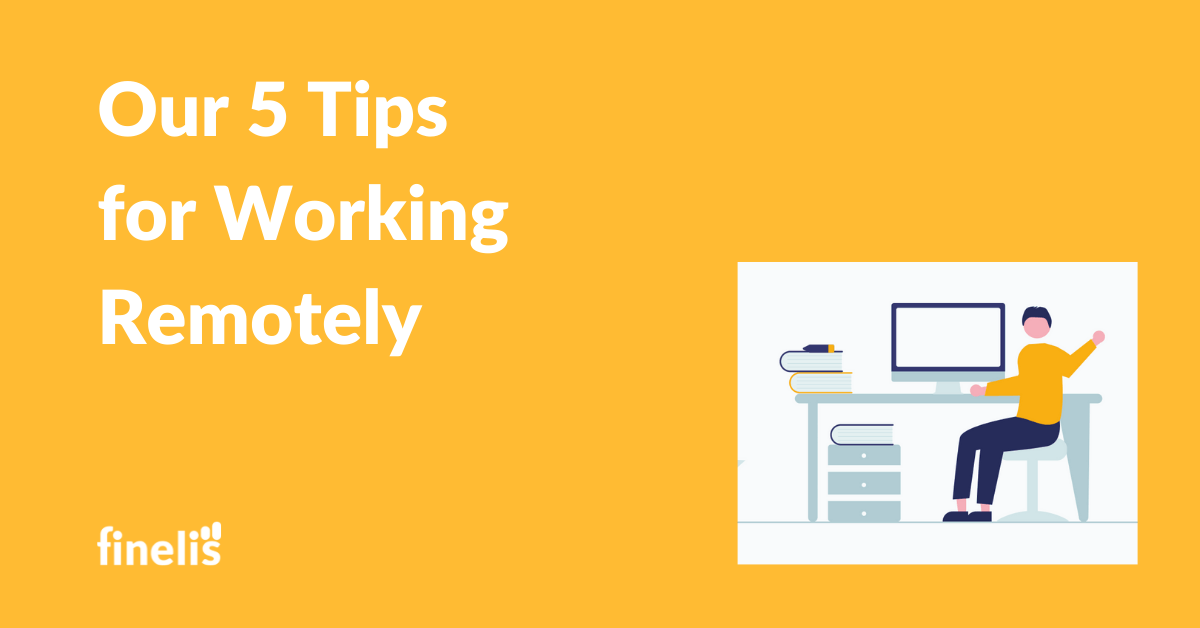The pandemic has revolutionized our lives but also our way of working. Indeed, the health crisis has accelerated certain trends such as digitization and remote work. Today, it is not only the self-employed who have opted for this way of working. It is also employees who have been able to continue working for their company from home.
Virtual remote meetings have become an important part of everyday life and business activity has increased on many digital platforms. Telecommuting has taken hold without preparation and has proven to work well. Not only has it allowed many businesses to continue operating, but it has also ensured the safety and health of employees.
However, the home office presents many challenges and requires certain rules to be in place. That’s why we’re going to give you 5 tips on how to be successful in your remote work.
1. Set up a workspace
To be efficient while working remotely, it is important to set up the space dedicated to your activity. You will design your workspace in a way that promotes physical comfort and ease of use.
A quiet place to work remotely
When telecommuting, you should think carefully about the location of your office. It is preferable to have a work surface dedicated exclusively to your professional activity to work in good conditions.
The ideal is to have your office separated from the rest of your home. If this is not possible, take the quietest and most isolated place in your home to work efficiently. Make sure that nothing and no one can interfere with your productivity.
Your work environment should allow you to concentrate and be quiet during meetings. The more thoughtful your workspace, the more serene and productive your work will be.
Workstation ergonomics
Whatever your status, whether you are a telecommuter or a freelancer, you know how important the ergonomics of the workstation is. It is not new; it is better to arrange your office so that you do not have any tension in your shoulders or back. If possible, position your chair with your back to the window and choose a quality chair. Don’t hesitate to invest in additional equipment such as noise-cancelling headphones and a laptop stand to help you work efficiently.
To go further: Transitioning from Employee to Freelancer

2. Equip yourself with practical tools to work remotely
When you must practice your job from home, it’s better to have practical work tools. Using tools will allow you to better follow your projects, or to improve your productivity. And if you are equipped with tools, you will be able to communicate more easily with your managers, customers, or colleagues.
Here are some essential tools you can consider for telecommuting:
Trello
Trello is a great tool for managing projects, organizing your schedule, or sorting your ideas. Thanks to its features, you can create tables, lists, cards that correspond to a task to be done. It is an application widely used by companies, whether they are start-ups or SMEs. You receive notifications when a collaborator adds or comments a task. This way, all the members of your company work together, even remotely.
Slack
When telecommuting, working with tools like Slack helps keep the company operational. This online platform allows collaborative communications between members of the same company. It presents itself as a real alternative to professional emails. Thanks to the creation of a workgroup, you can create channels corresponding to the various fields of your activity.
Zoom for remote meetings
The Zoom application has been particularly successful in the context of video conferences. It allows you to keep in touch with your team and even share screens. Practical, this application is also a real success to replace phone calls.

3. Adopt the Pomodoro method to work remotely
Telecommuting has a significant advantage in terms of organization or optimization of working time. Indeed, having an office at home means that you don’t have to commute to work. However, telecommuting is sometimes difficult to manage for both employees and freelancers.
The Pomodoro method allows you to gain in concentration and productivity. The principle is simple: you work intensely for 25 minutes, then you allow yourself a 5-minute break. You repeat this 4 times, before taking a 15-minute break… The whole thing is to be repeated throughout the day!
In addition to being simple to apply daily, the Pomodoro method has several advantages, such as improving your work, increasing your productivity, and better planning your task management. The Pomodoro method is one of the easiest and most effective ways to manage your time and therefore work better.

4. Stay in touch with the real world
Working remotely doesn’t mean that you will break the ties with every member of your company or with your clients. If you are a telecommuting employee, it is essential to continue working in collaboration with your supervisor or colleagues. The goal is to limit professional isolation and have employees work together even if each person is working from home.
Exchanges with people promote work. Whether it’s in the form of video conferencing or phone calls, it’s therefore important to schedule regular meetings to maintain contact with the office or with your clients.

5. Establish a work/life balance
To work remotely effectively, you need to set new personal rules. Indeed, staying at home changes the family’s daily routine. The living space becomes the working space and without a few rules, everything is likely to get mixed up. Here are a few organizational tips to reconcile your private and professional life at home:
- Plan your work time and make sure everyone respects it
- Plan your break times and define them well with those around you
- If you have family commitments, include them in your schedule and set up notifications to remind you of them
- Disconnect any device when you are done with your work schedule.

Working remotely requires a certain amount of organization to be effective. So, it’s essential to establish good habits from the start. Set up a work environment that suits you, use the tools at your disposal and maintain links with your colleagues or clients. This will help you get the most out of these new ways of working.

